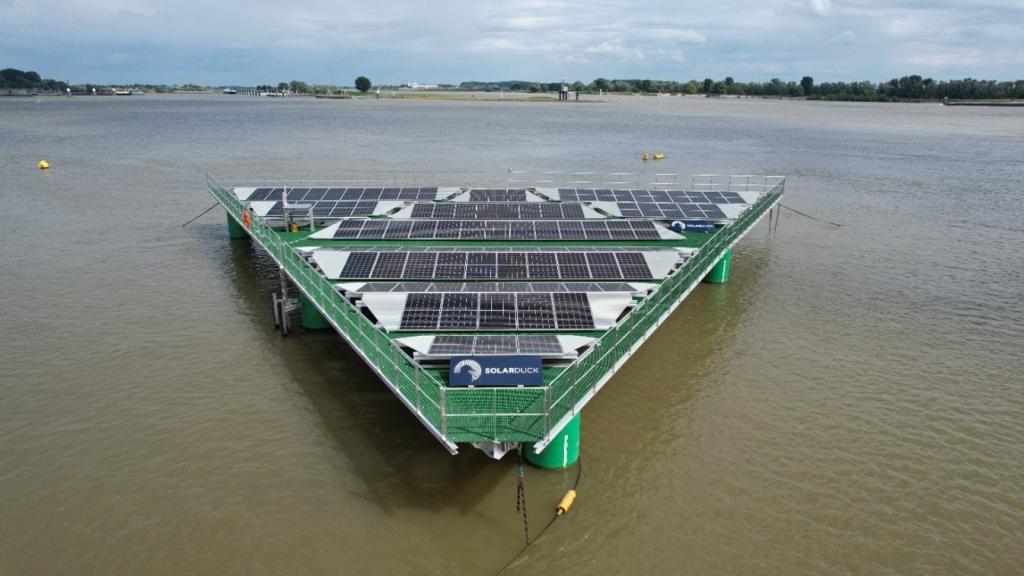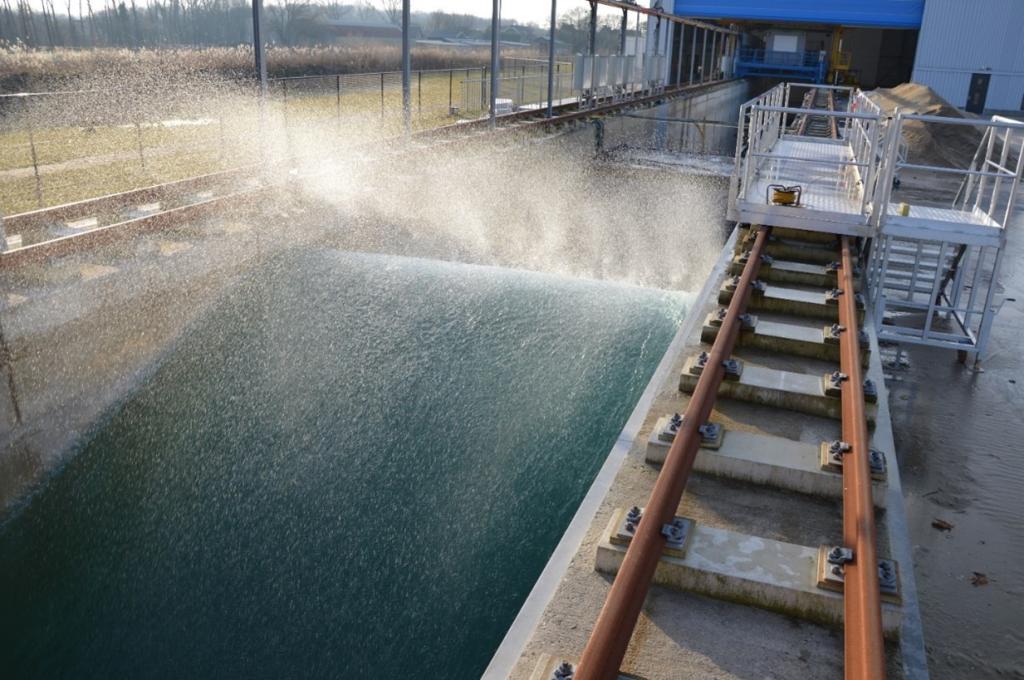
The development of solar energy at sea has great potential to contribute to the energy transition. To accelerate innovations, TKI Wind op Zee, in collaboration with TKI Urban Energy, issued an open innovation call at the end of last year for research into solutions for the biggest challenges for offshore solar installations. Three consortia have now each received €100 000 from TKI Wind op Zee for further research. The consortia are SolarDuck and TNO with the BOC project, Deltares and Oceans of Energy with the CeFlar project, and MARIN and SolarDuck with the WindForce project.
Offshore Floater PhotoVoltaics (OFPV) offers huge opportunities for the energy transition and energy independence of the Netherlands. Where land scarcity and the full electricity grid in the north and east of the Netherlands are an important bottleneck for land-based solar parks, the sea between the wind turbines still offers an infinite amount of acreage. Solar parks at sea are therefore an ideal solution for countries with little space and a lot of water, such as the Netherlands, and can be perfectly integrated into existing offshore wind farms.
According to the Roadmap “Sun at See” of the Dutch Ministry of Economic Affairs and Climate, large-scale application of OFPV in the North Sea could be possible in the next 10 to 20 years. However, the market is currently still facing challenges such as costs, the demanding maritime environment and integration into the energy system. In the Dutch North Sea, for example, we sometimes see very high waves that technological innovations have to be able to cope with. These challenges are included in the Multi-Year Mission-oriented Innovation Program for the energy transition. The three winning consortia will carry out further research into floating solar parks at sea. The aim is to bring large-scale applications closer.
The research proposals were submitted by two Dutch innovative technology developers of floating sun at sea, Oceans of Energy and SolarDuck B.V. The latter receives a subsidy for two separate research projects. The research call is financed from the PPP program allowance budget of the TKI Wind op Zee.
More about the winning projects:
BOC – Big Offshore Coupling (SolarDuck, TNO)
SolarDuck has recently successfully commissioned its first OFPV prototype. However, large OFPV assemblies of more than 10 MWp is the target and this requires an upgrade of the connections to cope with the high waves and high winds. Sufficient flexibility and at the same time a high required strength are key elements and combining these, normally contradictory requirements, requires innovative solutions. TNO and SolarDuck will therefore jointly develop a robust coupling in this research that has both resilient and damping properties. During the research, the spring/damper characteristics will be determined under various conditions on the basis of really large tests at TNO. The calculation method to be developed will be validated on the basis of this. This is expected to result in a significant reduction in peak loads and vibration levels. This can be beneficial in reducing the mass and costs of the coupling and construction of OFPV installations.

CeFlar – Cables in Floating Solar (Deltares, Oceans of Energy)
Oceans of Energy’s offshore floating solar panels have withstood many storms on the high seas in the past 2 years (Ciara, Dennis, Bella, Evert, Corrie, Dennis, Eunice & Franklin). In the Cables in Floating Solar project, Deltares and Oceans of Energy will investigate the effect of waves and currents on the electricity cables of a solar park in typical North Sea conditions. The cables that carry the electricity from the floating solar farm to the transformer station must be strong and flexible enough to withstand different wave and current conditions. In the Delta Flume, a nearly 300-metre long Deltares wave facility, a prototype cable is tested under various wave and current conditions. This research provides more insight into the forces on the cables. The results of this research can then be applied to theoretical concepts about the effect of North Sea conditions on cable infrastructure and translated into realistic solutions. The results can also be used to optimize the design of cable protection systems.

WindForce – Wind Induced Dynamics of Floating OffshoRe solar (MARIN, SolarDuck)
A large part of OFPV sea areas is sensitive to combinations of high wind speeds and waves, such as the North Sea where a combination of waves of 14 meters and wind speeds of more than 32 m/s can occur. Since OFPV preferably consists of large areas with low construction weight, in order to reduce the associated costs, it is inherently sensitive to wind loads. The combination of wind dynamics with waves and coupled structures is at the current end of what is possible in modern modelling techniques. This study aims to take modelling techniques and knowledge about the phenomena of wind wave and lightweight construction interaction to the next level. In a collaboration, MARIN and SolarDuck are investigating the interaction between wind, wave and OFPV systems. For this research, CFD simulations will be made of the combination of waves, wind, anchorage and linked platforms. The obtained simulation results will be validated with integrated wind and wave testing in the wave basin at MARIN. With their research, SolarDuck and MARIN want to further position the Netherlands as an expert knowledge centre, developer and ultimately exporter of OFPV. In addition, the improved understanding of the interaction with the wind wave structure will help to save costs and create a competitive advantage for all OFPV developers.
The three research projects will start this month.
